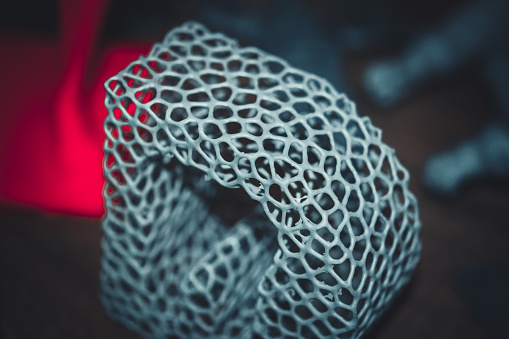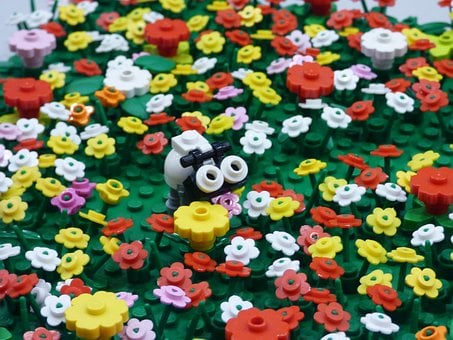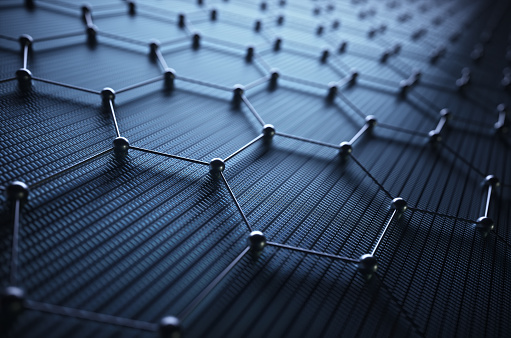Materials of LEGO
As a child Legos were one of my favorite toys. I remember begging my family members to buy me sets as a child. There was something so calming and intriguing about snapping such little pieces together and making one gorgeous and intricate structure. It was always so heartbreaking when you were finally finished playing with your masterpiece and had to disassemble your work. Although that’s the beauty of Legos, although sometimes you had to break it apart, you could always put it back together again. I have started building the sets again, enjoying the experience just as much as I had once done as a child. As I was thinking about what to write for today’s blog, I look down at the pieces scattered around my table, and I immediately knew. Henceforth the topic of this blog.

Lego had first been founded by Ole Kirk Christiansen with the help of his young son Godtfred Kirk Christiansen in 1932. Although the company had started with wooden toys and ironing boards, when lego decided to take the step towards worldwide fame in 1947 they bought a plastic injection-molding machine that would create the bricks we see today. Since then they have made over 400 billion legos and had distributed their product in 130 counties.
With so many pieces in the world, one can only be curious about what they are all made to create such a vast amount of products. According to lego, their products are made out of a carefully chosen material known as ABS. Essentially, ABS, also known as Acrylonitrile Butadiene Styrene, this material is both a thermoplastic and amorphous polymer. Thermoplastics act almost like glass, allowing themselves to have a melting point, be cooled, and reheated with much damage. ABS is a particular thermoplastic that does not burn, but liquifies, allowing itself to go through the plastic injection-molding process. The plastic itself is made of three materials, Acrylonitrile, Butadiene, and Styrene. Acrylonitrile (C₃H₃N) is produced from propylene and ammonia and is a synthetic monomer that brings chemical resistance and heat stability to ABS. Butadiene (C₄H₆) gives the legos the toughness and strength which makes them oh so horrible to step on, and it is made as a by-product of ethylene production. Styrene (C₈H₈) is created from dehydration ethylbenzene and provides processability and rigidity of ABS. ABS is most commonly made through the process of emulsion, a process of combining materials the don’t regularly mix and making them into one material. To add color to the opaque material, Lego adds Macrolex dyes.

It should also be noted that ABS is entirely recyclable and Lego has taken measures to recycle past pieces and turn them into new ones. In addition, Lego has taken further steps to make their products out of sustainable materials such as recycled polyethylene terephthalate (rPET) which were taken from used plastic bottles suppliers. Although, Lego has stated, “Lego bricks are designed to be safe and durable enough to be passed from generation to generation rather than being thrown away. Despite this, we are committed to making our products from more sustainable materials in the future,” and “To do so, we need to invent entirely new materials, as existing sustainable materials do not meet our safety and quality requirements.” Lego hopes to in the future develop bricks from bioplastics with little to no waste. In addition, the company has created lego bricks made from sugar cane. To further their new cause, they also released a new set which consists of flowers with parts made from bioplastics.

Overall, Lego bricks are made from ABS, but lego is now taking action and has begun a route towards sustainable and environmentally safe products. Although we are seeing changes in materials, lego promises to create each piece with care and under strict guidelines that support their companies morals.
Sources:
- Dezeen, https://www.dezeen.com/2021/06/25/lego-recycled-bottles-plastic-brick-rpet/
- Lego, https://www.lego.com/en-my/service/help/fun-for-fans/behind-the-scenes/brick-facts/toy-safety-general-bltea263a24fdbea7a0
- C&EN, https://www.compoundchem.com/2018/04/09/lego/
- Mama in the Now, https://mamainthenow.com/fun-lego-facts/
- ThoughtCo, https://www.thoughtco.com/lego-toy-bricks-first-introduced-1779349
- Creative Mechanisms, https://www.creativemechanisms.com/blog/everything-you-need-to-know-about-abs-plastic
- Omnexus, https://omnexus.specialchem.com/selection-guide/acrylonitrile-butadiene-styrene-abs-plastic
